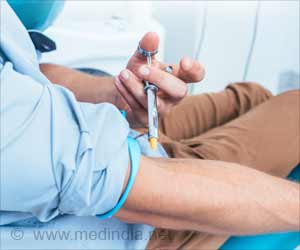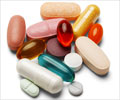More than half of parents expressed concern their child may be at risk for opioid addiction, found new survey.

Although short-term use of opioids can be effective when managed safely and the risks minimized, more than 2 million Americans abuse them and more than 90 people die of an opioid overdose every day. Opioid-related deaths among children and adolescents nearly tripled between 1999 and 2016, driven mostly by prescription opioids.* During Physician Anesthesiologists Week (Jan. 27 - Feb. 2), ASA wants parents to know that a physician anesthesiologist or other pain management specialist can create an individualized plan to best address patients' pain based on the condition or type of surgery and decrease the risk of opioid misuse and addiction.
The new survey of more than 1,000 parents of children aged 13-24, one-third of whom had been prescribed opioids, revealed that while 83 percent of parents believe they are prepared to safely manage their child's opioid use if prescribed, the facts don't quite bear out. The results suggest there is a need for improved awareness on: opioid alternatives; safe storage and proper disposal; talking to children about risks; and the benefits of naloxone, an emergency medication that reverses the effects of an opioid overdose.
Parents aren't asking about effective alternatives
While opioids can help with pain management for a few days after surgery or injury, there are effective alternatives that do not have the side effects and risks of opioids, including non-opioid medications and non-drug therapies. But the survey results suggest parents often don't ask about alternatives, or aren't aware of the range of options.
59 percent said they would talk to their physician about pain management options, but only 37 percent of those whose children were prescribed opioids actually did.
Advertisement
15 percent incorrectly said antibiotics are an effective pain reliever.
Advertisement
Parents are unaware that safe storage and proper disposal are key
More than half of people who misuse prescribed opioids get them from a friend or relative. That's why safe storage and proper disposal of the drugs are important to help curb the epidemic. But the survey results suggest parents don't fully understand the benefits and appropriate methods of safe storage and disposal.
Only 50 percent said they stored or would store opioids in a safe and secure place (not the medicine cabinet, where they can be accessed by others).
60 percent of those whose children took opioids said they needed fewer than were prescribed and, consequently, had leftover medication. But only 39 percent of all parents disposed or would dispose of leftover opioids as recommended, including taking them to a local pharmacy or health clinic, flushing them down the toilet or mixing them with dirt, kitty litter or coffee grounds before throwing them away.
Yet, 61 percent correctly identified the ideal method of disposing leftover opioids, which involves taking them to a collection center at a local police station or drug disposal program at a pharmacy or health clinic.
Parents understand importance of communication
When a child is prescribed opioids, parents need to have an open and honest discussion about the potential side effects and risks - not only with the child taking the medication, but other family members as well. Surveyed parents generally understood that.
74 percent said they have talked to their child about the dangers of abusing prescription and over-the-counter medications and 20 percent said they intend to have the conversation.
89 percent of those whose children have been prescribed opioids said they've had those discussions.
91 percent said they are confident their children know that prescribed and over-the-counter medications can be just as dangerous as illegal drugs.
Parents recognize naloxone saves lives
Naloxone (Narcan®) is a lifesaving medication administered via nasal spray or injection that rapidly reverses the effects of an overdose. It's important to know about naloxone because anyone who uses opioids - even if they've been prescribed by a doctor - may be at risk for an overdose.
The availability of naloxone varies by state. In most states it is available by prescription and some pharmacies sell it over the counter. Most parents recognize naloxone's value.
71 percent agreed that having naloxone on hand is the same as having other life-saving medication available for people who suffer from conditions such as allergies, asthma or diabetes.
29 percent were concerned that having it on hand encourages risky opioid use.
80 percent said they would be more comfortable having it at home if their child or another family member was taking opioids.
92 percent thought all first responders should carry it.
"It's critical that we recognize the gaps in opioid knowledge and work to correct them, ensuring everyone understands how to use them safely and minimize their risks. A physician anesthesiologist or other pain management specialist can help parents address their child's pain and decrease the risk of opioid misuse and addiction," said Dr. Mason. "We also need to reassure parents that naloxone saves lives and needs to be widely available."
The 17-question Engine CARAVAN® Omnibus Survey was conducted online November 25-December 2, 2018 among 1,007 parents of children ages 13-24. If their children were ever prescribed opioids, parents were asked to think of their child with the most recent prescription when answering the questions. If their children were never prescribed opioids, parents were asked to answer for their oldest child between the ages of 13 and 24.
Source-Eurekalert












